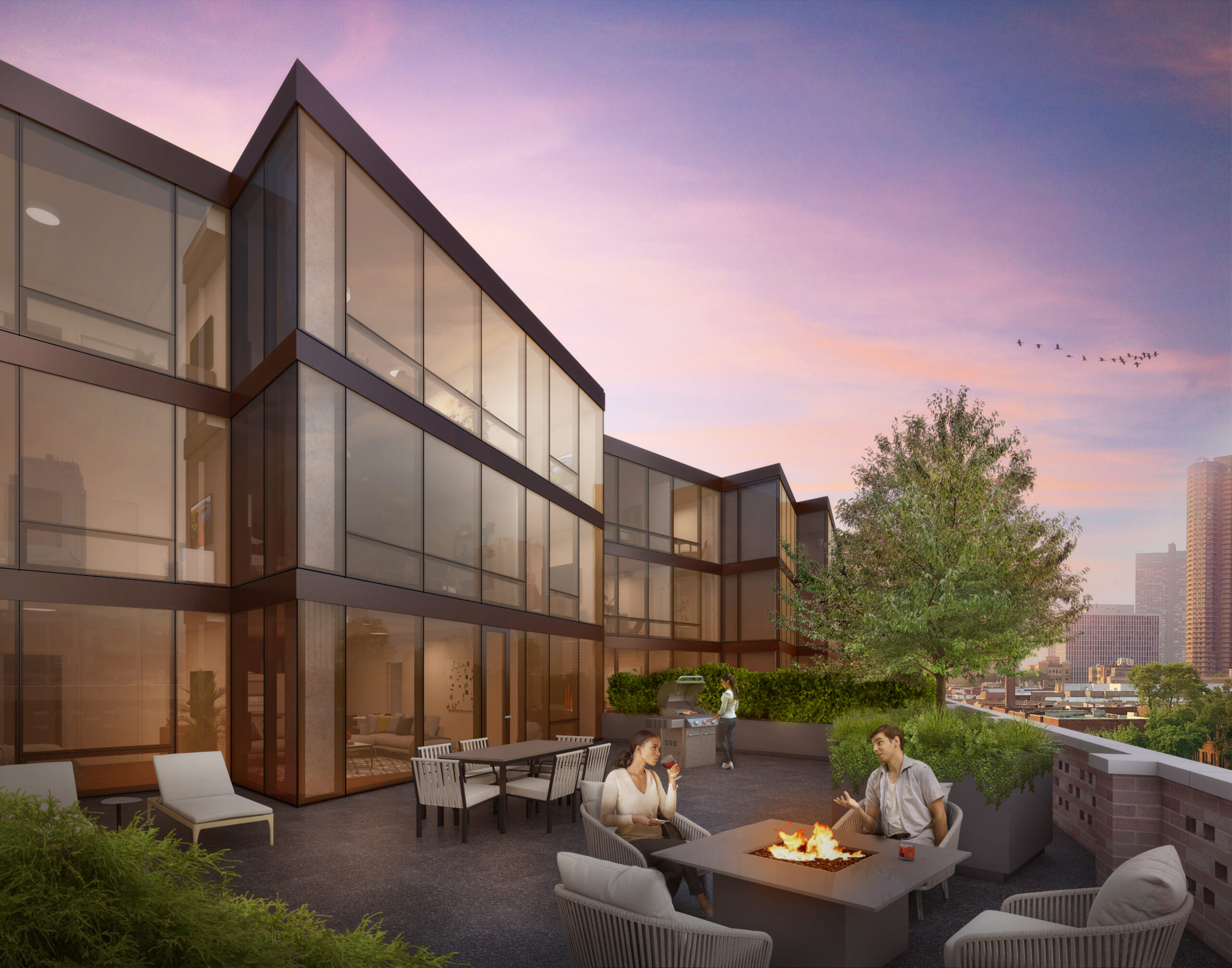The impact of COVID-19 on the multifamily sector may not have been as severe as its effect on the retail or office asset classes, but there are still many ways that those professionals active in the multifamily space adapted to pandemic-driven changes. Some of these adjustments, such as virtual apartment tours, are likely permanent.
Here are four pandemic-related trends expected to influence the multifamily sector in 2021, according to a roundup of Midwest-based real estate experts.
Incorporating biophilic design
With the COVID-19 pandemic encouraging Americans to stay outdoors for gatherings in effort to reduce transmission of the virus, there is a greater emphasis on the outdoors and nature. Expect multifamily developers to focus more on bringing the outdoors in via building designs, floor plans and amenities. Large outdoor terraces and rooftop amenity areas are becoming increasingly prevalent in new projects, particularly those in urban environments.
At Optima Lakeview, a Chicago-area multifamily project currently under construction, developer Optima Inc. incorporated a landscaped interior atrium that will run through the building’s core and bring in natural light.
“Green spaces not only improve the air quality for our residents but also those living near our buildings because vertical gardens filter pollutants and carbon dioxide out of the air,” says David Hovey Jr., president of Optima.
Student housing demand will remain
When COVID-19 prompted the shutdown of college campuses across the country, there was concern that student housing beds would sit empty for the 2020-2021 academic year. However, off-campus communities in strong locations not only saw students return, but in some cases, come back in higher numbers.
“2020 was a validation of the model we introduced to the market more than 15 years ago, underscoring how highly amenitized, pedestrian-to-campus housing remains in high demand regardless of how classes are delivered,” says Michael Hales, president of student living for CA Ventures.
CA’s student housing arm delivered more than 3,500 beds in 2020 and expects to deliver upwards of 2,200 for the 2021-2022 school year. Its 2020 leasing numbers were approximately 4 percent ahead of 2019.
Hales predicts that large Tier 1 universities will expand their enrollment bases without having to make significant investments in infrastructure by offering a combination of virtual and in-person coursework, a move that he believes should create additional demand for off-campus housing.
Read more on REBusiness Online
Visit Optima Lakeview for more details

